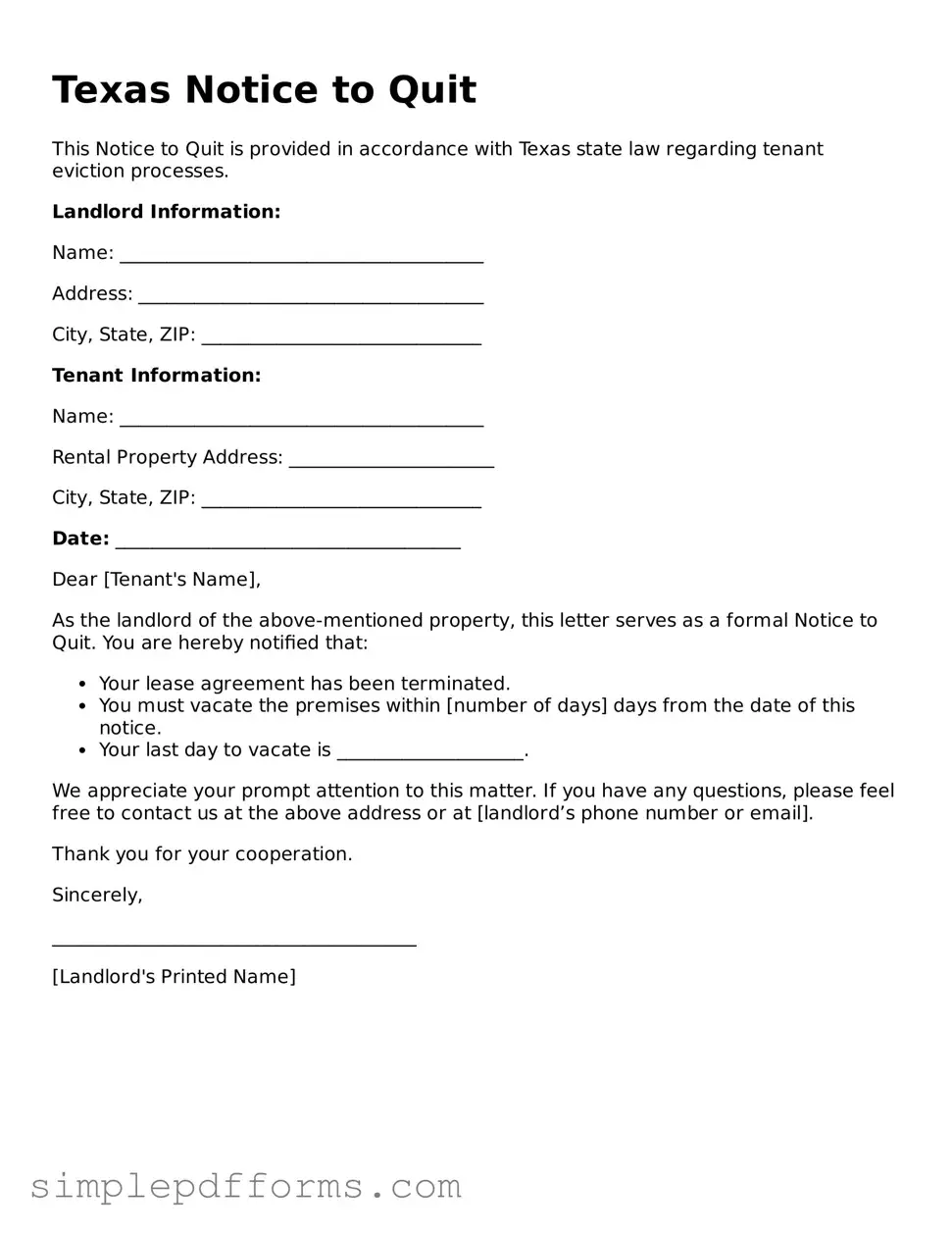Texas Notice to Quit
This Notice to Quit is provided in accordance with Texas state law regarding tenant eviction processes.
Landlord Information:
Name: _______________________________________
Address: _____________________________________
City, State, ZIP: ______________________________
Tenant Information:
Name: _______________________________________
Rental Property Address: ______________________
City, State, ZIP: ______________________________
Date: _____________________________________
Dear [Tenant's Name],
As the landlord of the above-mentioned property, this letter serves as a formal Notice to Quit. You are hereby notified that:
- Your lease agreement has been terminated.
- You must vacate the premises within [number of days] days from the date of this notice.
- Your last day to vacate is ____________________.
We appreciate your prompt attention to this matter. If you have any questions, please feel free to contact us at the above address or at [landlord’s phone number or email].
Thank you for your cooperation.
Sincerely,
_______________________________________
[Landlord's Printed Name]
